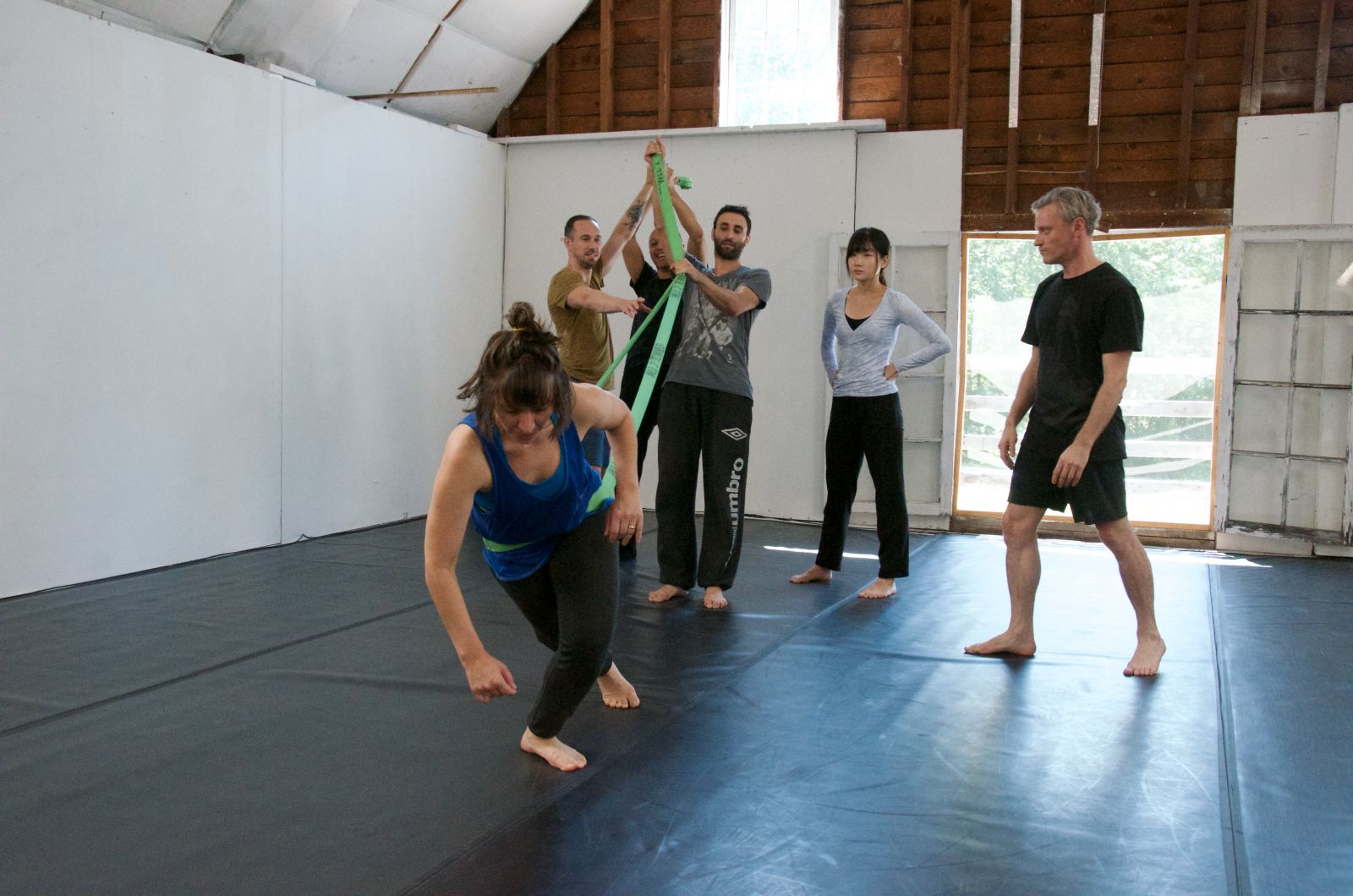TDPS Dance Artist-in-Residence Christopher K. Morgan, Dance Omi Program Director
September 13, 2016

This past summer, TDPS Dance Artist-in-Residence Christopher K. Morgan served his eleventh year as Program Director for Dance Omi International Dance Collective.
This past summer, TDPS Dance Artist-in-Residence Christopher K. Morgan served his eleventh year as Program Director for Dance Omi International Dance Collective. Dance Omi, established in 2005 by Nicole Smith-Goldberg, is a summer residency program that brings together ten international dance artists each year for three weeks of creative exchange, experimentation, and collaboration. Dance Omi is part of a larger organization, The Art Omi International Arts Center, which also provides programs in writing, visual arts, music and architecture. The Dance Omi residency takes place in Ghent, NY and ran this summer from July 19th - August 8th.

Dance Omi residents experiment with aerial equipment
Morgan was appointed as the Dance Program Director by Omi’s Director Ruth Adams and Founder Francis Greenburger in 2006 for his skills in facilitating creative exchange among dance artists. The program focuses on bringing together international artists from different cultural backgrounds--last year, over 130 applications came from 32 different countries, including South Korea, Australia, France, Japan, Jordan, the United States, Canada, Hungary, Turkey, and Serbia. The program is for professional dancers and choreographers coming from a wide age range and from all dance backgrounds, including modern, ballet, improvisation, and cultural/ethnic dance forms (such as Spanish flamenco or north Indian kathak). As Morgan says, all of the residents tend to be at a point of “curiosity” and “precipice” in their personal and professional lives. The Dance Omi program encourages residents to come with no preconceived projects, and they are given an opportunity to explore “what’s next” with fellow artists, who are often in similar moments of artistic transition.

Residents learn about each other’s unique creative processes and thus work towards community-building that goes beyond the dance art form itself, aiming towards wider cultural consequences. For example, Morgan explains that one dance artist from Serbia discovered and demonstrated how her unique dance style inhabits the tensions that she experienced growing up on the border between Serbia and Hungary during a period of civil war. She guided fellow residents in inhabiting her physicality in their own bodies, with the idea that taking on different (and sometimes contradictory) movement styles leads to improved cultural understanding and openness to collaboration across borders.



The diversity of the artists at Dance Omi requires that they maintain a certain amount of openness to vulnerability. The international nature of the program presents certain linguistic and cultural challenges, and residents are thus encouraged to shift how they work and step outside of their comfort zone. Morgan explains that the program is decidedly not interdisciplinary with other art forms (such as writing, music, or visual arts) in order to give the dancers/choreographers time to hone in on their craft and more fully explore the wide variety of cultural perspectives that their fellow residents bring to the space.
As Dance Omi Program Director, Christopher Morgan works year-round to draw in some of the best dance artists from across the world. Only ten residents are selected from a wide applicant pool each year, and they are chosen based on the unique cultural and sociopolitical perspectives that they can offer. Dance Omi has had a large University of Maryland TDPS presence over the years, including Stephanie Miracle (MFA Dance ‘14), Erin Crawley-Woods (MFA Dance ‘14), and Sarah Beth Oppenheim (current MFA Dance candidate); BA Dance student Dee Dee Ling also worked as an intern at the program this past summer.

This year, Stephanie Miracle returned to Dance Omi as the program’s guest mentor and worked with Morgan on a duet project. Current TDPS multidisciplinary guest artist Monstah Black also made an appearance at the alumni concert, having been a Dance Omi resident himself in 2011, and guest mentor in 2013.
Christopher Morgan is doing great work to facilitate art-making at Dance Omi, and he brings those same values to support TDPS’ mission of creative collaboration and transformation. In his work in TDPS classrooms and studios, he brings these same opportunities to our students to advance their artistic work and cultural awareness.
2016 Dance Omi residents with Program Director Christopher K. Morgan (top left)
By Kate Spanos


